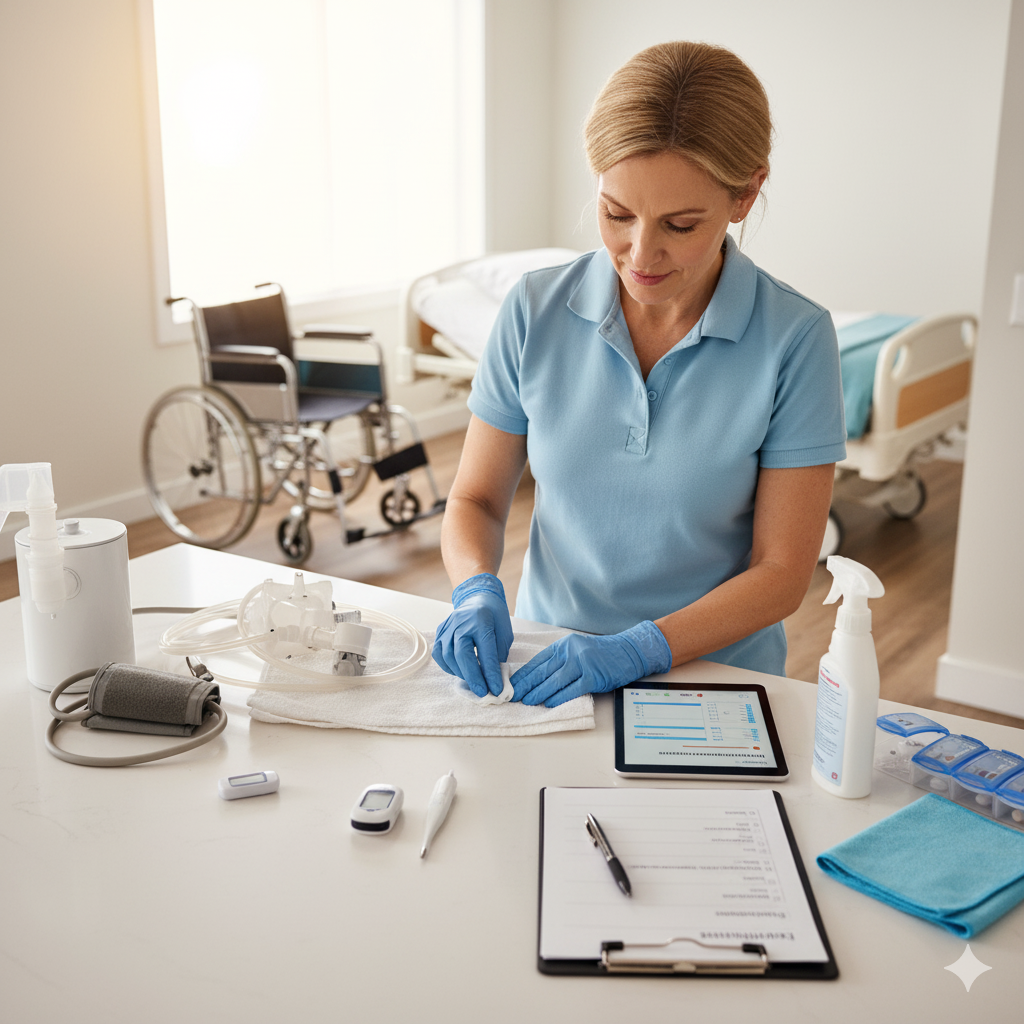Caregiver’s Guide to Cleaning and Maintaining Medical Equipment at Home
Caring for a loved one at home often means using medical equipment on a daily basis—nebulizers, oxygen monitors, wheelchairs, or even smart devices. While these tools make healthcare more accessible, they also require proper cleaning and maintenance to stay safe and effective.
Why Cleaning and Maintenance Matter
Medical devices come into direct contact with the body, which means they can easily collect bacteria, dust, or medication residue. If not cleaned properly, they can:
- Spread infections.
- Reduce device performance.
- Shorten the lifespan of the equipment.
- Shorten the lifespan of the equipment.
For example, a nebulizer that isn’t cleaned after each use can harbor germs. To learn how to use one safely and effectively, check out our Beginner’s Guide on How to Use a Nebulizer Correctly.
General Rules for Cleaning Medical Equipment
While each device has its own care instructions, here are universal rules every caregiver should follow:
- Wash hands thoroughly before handling equipment.
- Follow manufacturer guidelines—always check the manual.
- Use mild soap and warm water for basic cleaning unless otherwise directed.
- Air-dry equipment completely before reassembling or storing.
- Disinfect regularly using recommended solutions.
Caring for Smart Medical Devices
Smart devices such as connected oxygen monitors, digital thermometers, or smart nebulizers need special care. Here are tips:
- Wipe sensors gently with alcohol wipes—avoid water damage.
- Check batteries or charging ports regularly.
- Keep apps updated to ensure accurate data syncing.
- Store in a dry environment to avoid condensation.
To better understand how these tools are shaping the future of care, explore our blog on The Role of Smart Medical Devices in Home Healthcare.
Signs It’s Time to Replace Equipment
Cleaning can extend the life of medical devices, but parts eventually wear out. Look for:
- Cracks or discoloration in tubing.
- Filters that turn gray or clogged.
- Fraying straps on braces or supports.
- Battery life that drops quickly in smart devices.
Replacing these parts on time ensures safety and performance.
Cleaning Other Common Medical Equipment
- Wheelchairs: Wipe down handles, seats, and wheels weekly with disinfectant.
- Walkers & Crutches: Clean grips and rubber tips to prevent bacteria buildup.
- Hospital Beds: Change linens daily and disinfect rails and remotes.
- Compression Stockings: Wash in mild detergent after each use and air-dry.
Each item has its own cleaning schedule, but consistency is key.
Safety Tips for Caregivers
- Never share equipment between patients.
- Label devices clearly if caring for multiple people.
- Create a cleaning schedule and set reminders.
- Keep a backup set of parts like masks, filters, or tubing.
Final Thoughts
Clean and well-maintained medical equipment is not just about extending the device’s lifespan—it’s about protecting your loved one’s health. A few minutes spent each day on cleaning can prevent infections, ensure reliable performance, and bring peace of mind.
Remember:
- For respiratory care, always check our Nebulizer Beginner’s Guide.
By following a structured cleaning and maintenance routine, you’ll make home healthcare safer, smoother, and stress-free.




